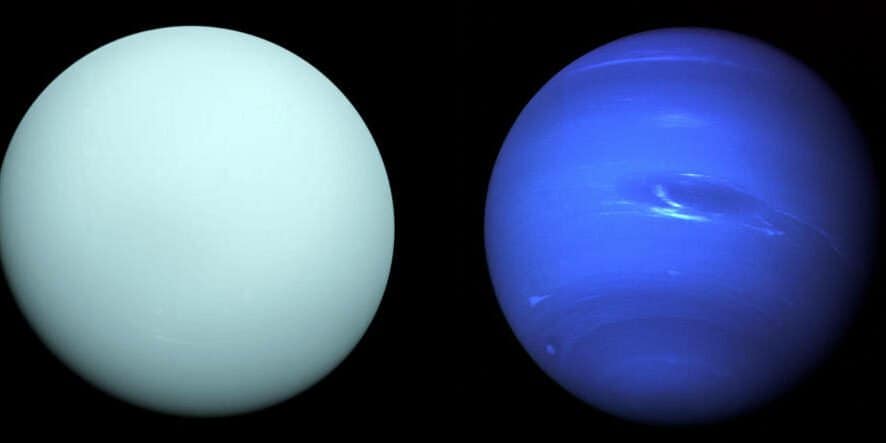Uranus and Neptune, two of the most mysterious planets in our solar system, have not been extensively studied. While Earth benefits from a vast network of spacecraft that allows us to track satellites almost anywhere, the only human-made object that has come close to these distant planets is Voyager 2.
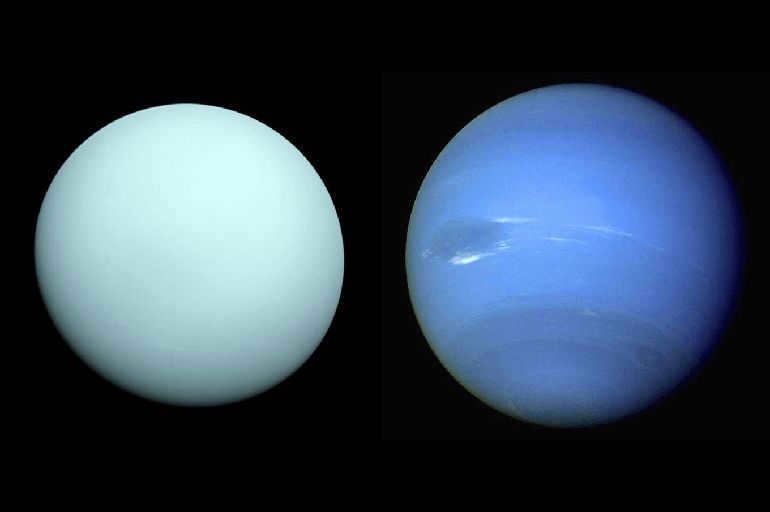
Uranus and Neptune are gas giant planets with narrow ring systems. They possess unique physical characteristics, as highlighted in the following table.
Comparison of Physical Characteristics
| Parameter | Uranus | Neptune |
| Mass (in kg) multiplied by 10 to the 25th power | 8,6813 | 10,243 |
| Radius of the planet (in km) | 25,362 | 24,622 |
| Average temperature in the tropopause region (in Kelvin) | 53 | 55 |
| Orbital velocity, km/s | 6.81 | 5.45 |
While the orbital speed of these planets is nearly the same, the duration of their years varies.
Comparisons of Uranus and Neptune
Uranus and Neptune are classified as gas giants, sometimes referred to as ice giants. They are essentially sibling planets and share more similarities than Earth and Venus.
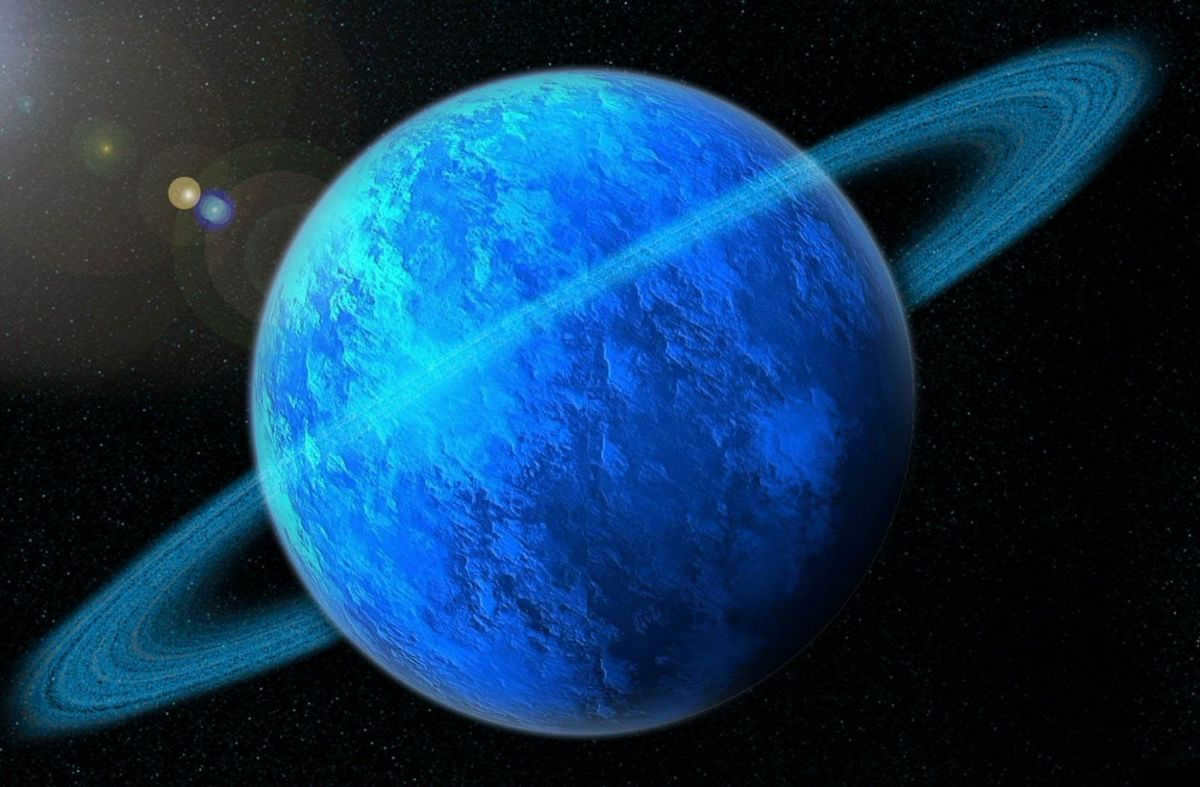

There are several noteworthy similarities between Uranus and Neptune:
- They both have a core made of rock and ice.
- Their atmospheres consist of hydrogen, helium, and methane.
- They have similar temperatures.
- Both planets have an orbital period of approximately 17 Earth hours.
Both Uranus and Neptune have a blue color. This is attributed to the presence of methane in their atmospheres. However, astronomers have not yet provided a clear explanation for why Neptune appears to have a more vibrant blue hue than Uranus.
Uranus and Neptune both possess a considerable amount of moons – 27 and 14, correspondingly. Meanwhile, all the objects encircling them are relatively small. It is likely that they were captured after the planets formed from the asteroid belt. The rings revolving around these celestial entities are slender and faint.
Major distinctions
Although the planets share numerous characteristics, there are distinct disparities among them. The primary dissimilarities include:
Uranus, similar to Venus, revolves on its axis in a phenomenon known as “retrograde.” In contrast, Neptune, like the rest of the planets in the solar system, travels from west to east.
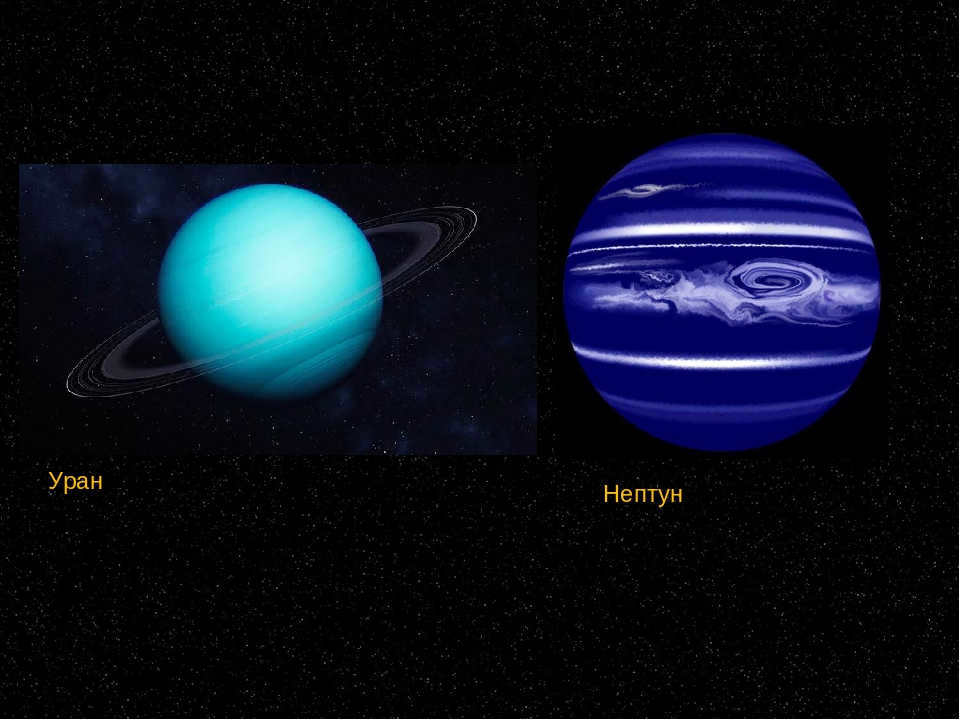
Uranus has a unique characteristic in that its equatorial plane is tilted at an angle of 97.86° compared to the plane of its orbit. This sets it apart from other planets, such as Neptune, which have a more typical spinning motion. Instead, Uranus moves more like a rolling ball. This positioning results in the polar regions receiving more sunlight than the equatorial regions.
Because of this specific orientation, the length of day and night differs on Uranus compared to other planets. On Uranus, this cycle occurs once per year. Neptune, which rotates at a similar angle to Earth, also experiences a similar alternating light pattern.
Astronomers have yet to determine why Uranus has such a unique axis of rotation inclination and why it moves in the opposite direction compared to most of the Sun’s satellites. There are currently two theories:
- Colliding with a massive planetoid during its early formation stage.
- Being affected by a large satellite that was lost before humans started exploring space.
Initially, scientists thought that the atmospheric conditions of these two celestial bodies were significantly distinct. “During its flyby in 1989, Voyager sent back images of Uranus, which appeared to be uniformly colored.”
Contrasting Neptune, it transmitted images showcasing Large and Small dark spots, which were actually stormy areas. The wind on this particular planet was discovered to have an average velocity of 325 meters per second, with a maximum of 600 m/s in the eye of a hurricane.
Differing from Jupiter, storms on Neptune are unpredictable. In 1994, further analysis of this celestial body using the Hubble Telescope failed to locate the Great Dark Spot.
Due to its turbulent atmospheric conditions, Neptune was once compared to Uranus in terms of climate. However, recent research on this serene planet has debunked the initial perception. In 2007, spring arrived on Uranus, coinciding with the formation of storm zones within its atmosphere.
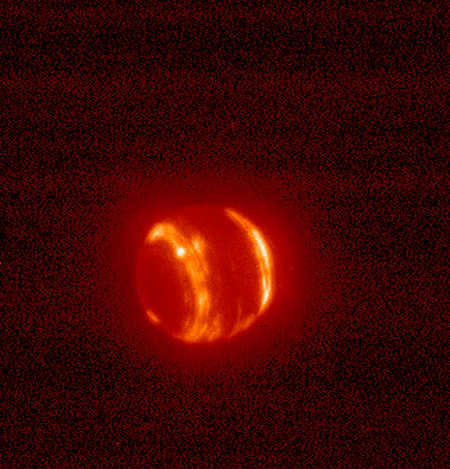
Out of all the planets that can be seen with the naked eye, there are five of them: Mercury, Venus, Mars, Jupiter, and Saturn. These planets are relatively easy to locate in the sky, even when it is illuminated by light. However, there are two planets that are a bit more challenging to observe.
A comparison of Uranus and Neptune planets
In order to locate them precisely, one requires a telescope as they were only discovered after the telescope was invented.
Uranus was first observed in 1781 by William Herschel, while Neptune was identified in 1846 through the calculations made by John Adams of England and Urban Leverrier of France.
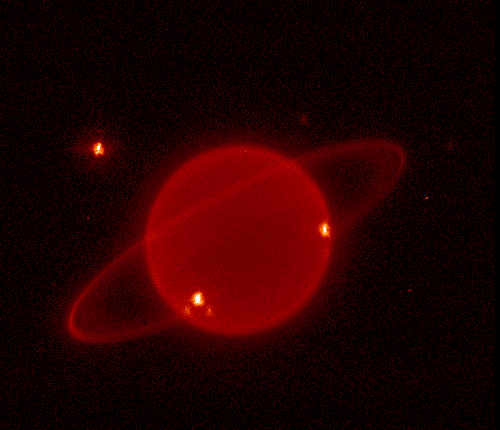
Despite being twin planets, Earth and Venus differ significantly in terms of atmosphere and surface temperature. However, they do share some similarities. Both planets consist of hydrogen, helium, and liquid water with traces of ammonia. Additionally, they are believed to have solid cores similar in size to Earth, comprised of molten rock and metal. Moreover, both planets have cloud layers with comparable temperatures, even though Neptune receives 40% less sunlight than Uranus.
Unique Atmospheres
Uranus possesses an almost featureless atmosphere, while Neptune’s surface is adorned with rapidly moving clouds and tempests.
The winds on Neptune hold the title for being the fastest in the entire solar system, clocking in at over 2100 km/hour.
It is plausible that they harbor such contrasting weather systems due to Uranus’ peculiar rotational orientation, with its axis tilted at a staggering 98 degrees. Both of these celestial bodies boast magnificent rings.
The rings encircling Uranus are comparatively large and wide, whereas the rings surrounding Neptune are barely discernible even with the aid of a powerful telescope.
Regrettably, these colossal planets have only been explored once by the Voyager 2 spacecraft, which conducted a flyby of Uranus in 1986 before venturing towards Neptune, skimming just a few thousand kilometers above the cloud tops. Unfortunately, there are currently no plans to embark on future missions to visit these captivating planets.
Neptune is the eighth celestial body in the Solar System and now holds the title of being the farthest planet from the Sun, as Pluto is no longer considered a planet. It is not visible to the naked eye and can only be observed with the help of astronomical instruments. The Voyager 2 spacecraft provided the only close-up view of Neptune in 1989. To comprehend the magnitude of this planet, it is important to compare its mass to that of Earth.
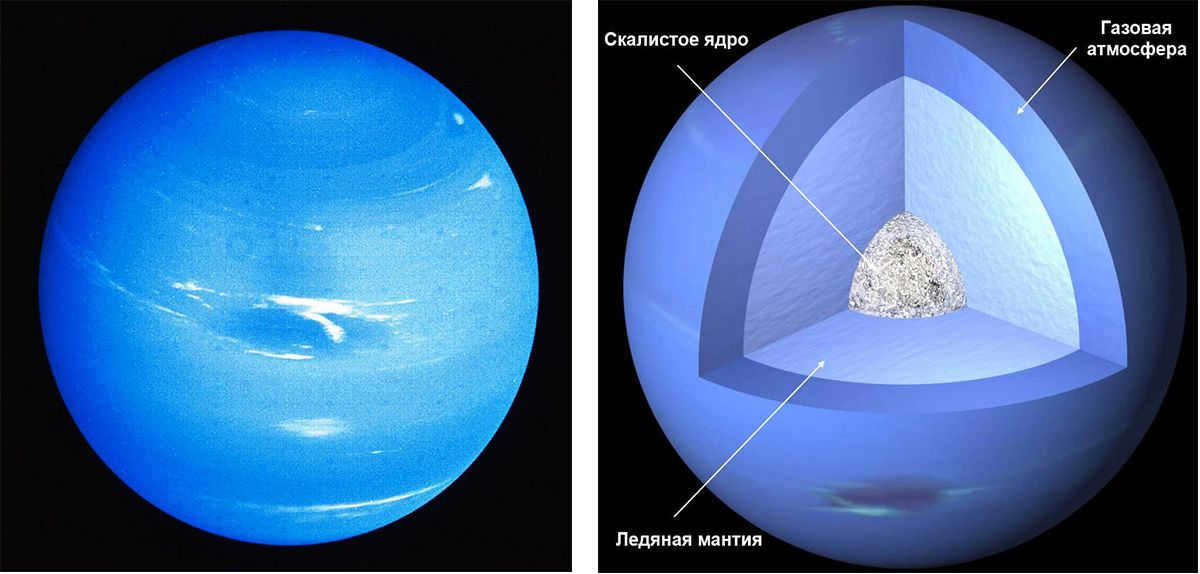
Internal Composition of Neptune
Neptune is classified as an ice giant. Its core consists of a rocky mass, while above it lies a combination of helium, hydrogen, ammonia, and methane-based gases. The solid portion of Neptune contains frozen water and methane ice, and is covered by a dense and heavy atmosphere.
The core primarily consists of iron, nickel, and silicates, and is relatively large, measuring 1.2 times the mass of a similar structure found within the Earth’s interior. The pressure within Neptune’s core can reach 7 Mbar, which is twice as high as the pressure within the Earth’s core, and the temperature can reach up to 5400 K.
The mantle of the planet is substantial, weighing 10-15 times more than the entire mass of the Earth.
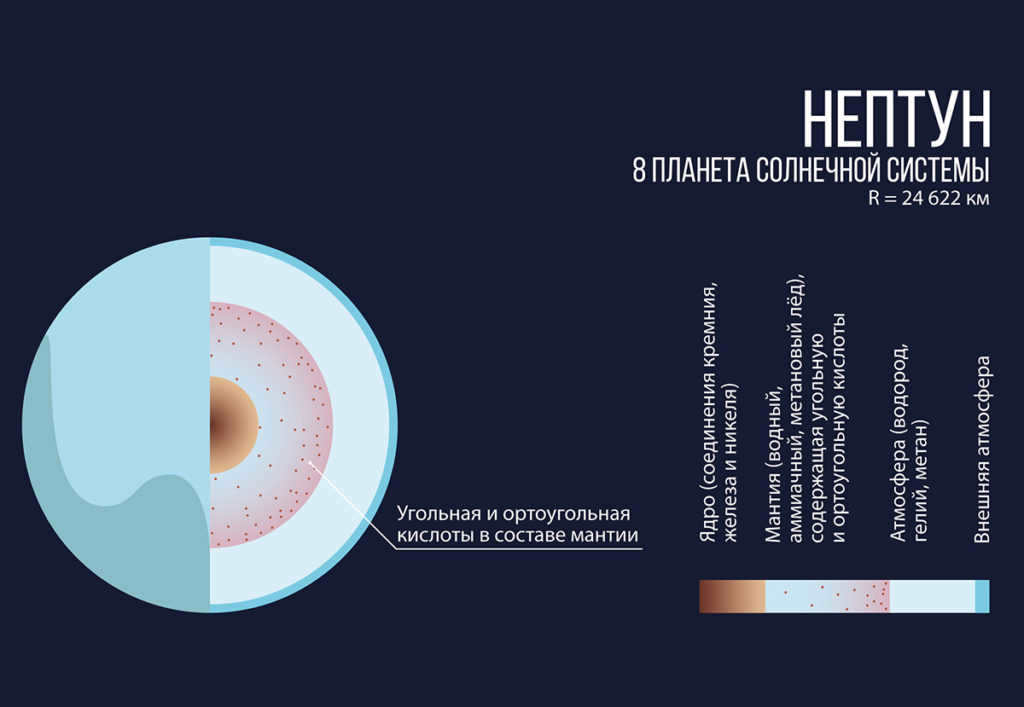
Located 7,000 kilometers away from the planet’s surface, the methane within Neptune’s interior goes through a transformation and forms diamond crystals that rapidly descend towards the core. It is possible that there exists a layer of liquid diamond material at the boundary between the core and mantle.
If we consider the total mass of Neptune as 100%, the atmosphere of the planet accounts for 10-20% of that value. The lower layers of the atmosphere are mainly composed of methane, ammonia, and water. Meanwhile, the upper atmosphere consists of 19% helium, 80% hydrogen, 1% methane, and a few other impurities. The presence of methane, which absorbs red light waves, gives Neptune its characteristic blue hue, leading to its name being derived from the ancient Roman god of the seas.
Uranus, the neighboring planet, also possesses a surface color that is blue in appearance, albeit with a slightly different shade known as ultramarine, while Neptune’s hue leans more towards azure. Given that both planets have a similar concentration of methane in their atmospheres, scientists hypothesize that there might be an undiscovered component present in Neptune’s air that contributes to the formation of its distinctive azure color.
The atmosphere of Neptune can be divided into three layers:
- the troposphere, which is in direct contact with the planet’s surface;
- the hazy stratosphere, where methane compounds are exposed to ultraviolet light and contains hydrogen cyanide and carbon monoxide;
- a narrow tropopause with a pressure of 0.1 bar separating the two.
Due to the absence of a solid surface on Neptune, its atmospheric layers rotate at different speeds: the circulation period is 18 hours at the equator and 12 hours near the poles.
This theoretical model of the planet’s structure is based on mathematical calculations.
Comparing the Earth and Neptune in terms of size

With a radius measuring 24,600 kilometers, Neptune stands as the fourth largest celestial object within our Solar System, dwarfing Earth by a factor of four.
In terms of key features:
Comparison between the Masses of Earth and Neptune
The approximate mass of Neptune is slightly over 100 sextillion tons (a sextillion on the short scale, which is used in most countries, is 10 to the 21st power). Based on this measurement, Neptune is heavier than our planet. There are approximately 17 kilograms of Neptune for every 1 kilogram of Earth.
Neptune is not the largest celestial body in our solar system; it falls between the gas giants and Earth in terms of size. For instance, Jupiter is about 9 times heavier than Neptune.
“If we were to explore the solar system thoroughly, like a homeowner examining every nook and cranny, would we uncover all the secrets of the universe? Unfortunately, no. Just as examining a small pebble or shell won’t reveal the mysteries of the vast ocean.”
K.E. Tsiolkovsky
In more recent times, Uranus, Neptune, and Pluto have been discovered as the farthest planets in our solar system. The ancient civilizations were unaware of their existence, and even today, scientists have limited knowledge about these distant planets compared to the ones closer to Earth.
Uranus: The Pioneer of Ice Giants
Uranus, initially mistaken for a faint star due to its minimal visibility, proved to be a groundbreaking discovery in 1781. Renowned English astronomer William Herschel (1738-1822) was the first to observe it through a telescope, determining its true planetary nature. Therefore, Uranus holds the distinction of being the inaugural planet ever found using this innovative tool.
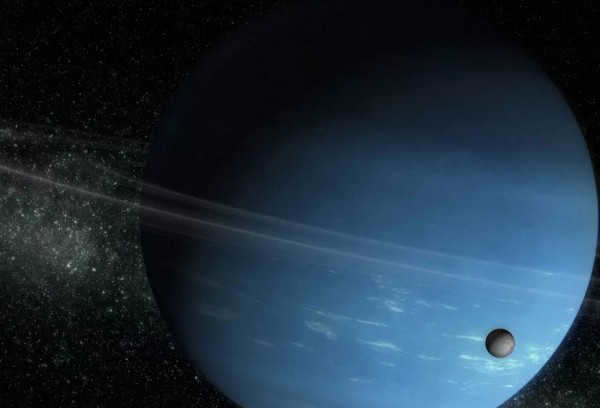
Uranus, similar to its neighboring planet Neptune, is classified as an ice giant due to its low temperatures and its composition, which is primarily composed of frozen ice. The atmosphere of Uranus contains icy clouds of hydrogen and ammonia that traverse its sky. In fact, Uranus possesses the coldest atmosphere in the entire solar system, with temperatures reaching as low as -224 °C. The planet itself consists of a combination of ice and rock on its surface, while its core is composed of hot water. Additionally, Uranus boasts a total of 21 satellites and rings that are often challenging to observe even with the aid of a telescope.
Scientists theorize that in the distant past, there was a colossal impact between Uranus and a celestial object comparable in size to our own planet. The force of this collision was so immense that it caused Uranus to undergo a dramatic shift in its axis, resulting in its current orientation where it lies almost parallel to its orbit around the Sun. As a result, Uranus is often described as “lying on its side” as it orbits. Furthermore, Uranus moves at a leisurely pace in its journey through space, with its orbital period lasting 84 Earth years. In terms of its rotation, Uranus completes a full day in just 17 hours.
Neptune and its extraordinary partner
The discovery of this planet is attributed to the field of mathematics. During the 19th century, scientists observed peculiar changes in the orbit of Uranus. The most logical explanation for this phenomenon was the existence of an additional planet that orbits the Sun beyond Uranus. The trajectory of this newly proposed planet was even calculated prior to its actual discovery. A monumental breakthrough took place in 1846, and the planet was appropriately named Neptune after the Roman deity associated with the oceans, owing to its distinct blue hue.
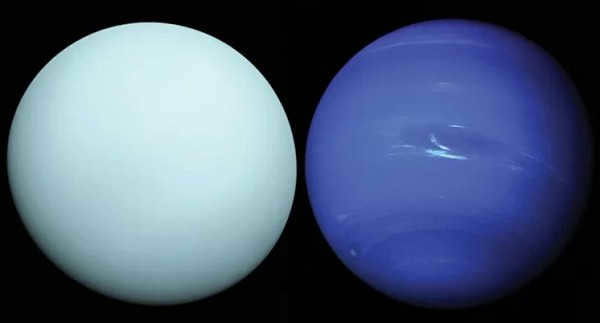
Uranus (on the left) and Neptune have similar sizes, approximately four times the size of Earth. However, they differ in terms of mass. Uranus is 14.5 times more massive than our planet, while Neptune is 17.5 times more massive.
Neptune shares many physical characteristics with Uranus, although it is slightly smaller and heavier. It takes Neptune 16 hours to complete one rotation on its axis, but its orbital period, or year, is a lengthy 165 Earth years. Interestingly, Neptune’s atmosphere does not rotate in perfect synchrony with the planet itself. The equatorial regions complete one revolution in 18 hours, while the polar regions take 12 hours. This discrepancy in rotation leads to extremely powerful winds on Neptune, reaching speeds of up to 2100 km/h.
Around Neptune, there are 14 satellites, with the most well-known being Triton. Triton stands out because it orbits in the opposite direction compared to the other satellites and the planet itself. It is speculated that this is due to Triton originally being a small planet with its own orbit, but then being captured by Neptune’s gravitational pull and becoming a satellite.
Scientists have predicted that Triton will gradually approach Neptune and, in millions of years, will come so close that it will eventually be destroyed. As a result, rings similar to those around Saturn will form from the remnants of Triton.
A celestial body that has lost its planetary status
For a significant period – spanning from its initial discovery in 1930 up until 2006 – Pluto held the esteemed position as the ninth planet in our solar system. However, numerous attempts were made during this time to strip it of its planetary classification, likening it instead to asteroids. Presently, Pluto is regarded as a transneptunian object – a classification that encompasses bodies orbiting the Sun in orbits more distant than Neptune. Among the vast number of transneptunian objects, totaling around one and a half thousand, Pluto reigns as the largest.
Simultaneously, Pluto holds the distinction of being the largest among the dwarf planets.
It is undeniably a diminutive celestial body. In terms of volume, Pluto measures three times smaller than our Moon and five times smaller in mass. Its surface area is equivalent to that of Russia. Pluto is a rocky, icy planet with a tenuous atmosphere and a surface temperature of -223 °C.
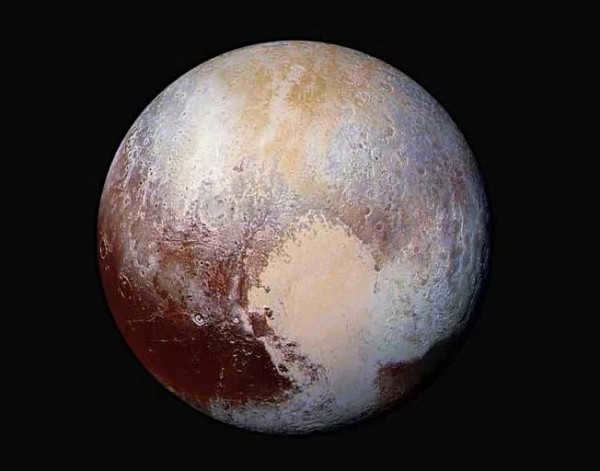
Pluto possesses the most elongated trajectory among all the planets in our solar system. It is in proximity to the Sun at a distance of 4.4 billion kilometers and then moves away from it to a distance of 7.4 billion kilometers. There are times when Pluto is actually closer to the Sun than Neptune, temporarily becoming the eighth planet. This situation occurred between 1979 and 1999, for example.
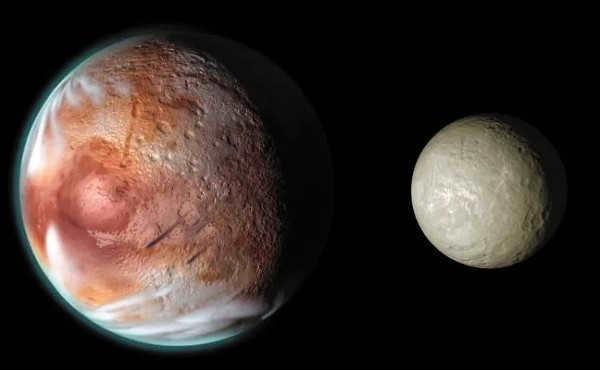
Charon, the natural satellite of Pluto, is just half the size of the planet itself. This unique ratio in the solar system leads some astronomers to propose that this system should be classified as a double planet, with both Pluto and Charon sharing equal importance. Pluto completes one rotation on its axis every 9 hours, and Charon does the same, resulting in them always facing each other with the same side.
In addition to Pluto, there are other dwarf planets located in the outer regions of the solar system. Among them, Erida stands out as slightly more massive than Pluto, although it has a smaller volume.
There has been a hypothesis that Pluto used to be a moon of Neptune due to its smaller size and mass compared to some of Jupiter and Saturn’s satellites. However, there is currently a lack of substantial evidence to support this theory.
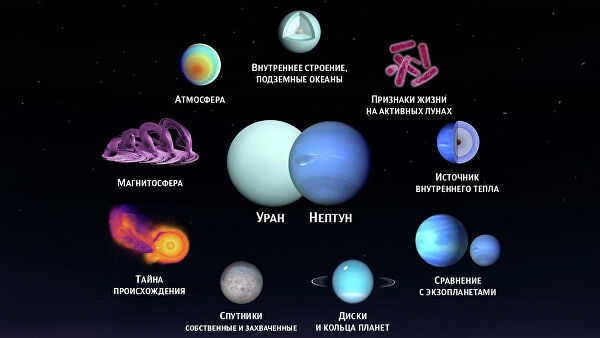
Uranus and Neptune, two celestial bodies within our solar system, have been classified as planets. However, a fascinating theory suggests that these planets may have originated from a distant galaxy. Despite their extraterrestrial origins, Uranus and Neptune share many remarkable similarities. Not only do they possess similar sizes, masses, rotation periods, and compositions, but they also exhibit distinct features that allow astronomers to differentiate between stars and planets. If one were to ponder the question of which planet is larger – Neptune or Uranus – a comparative analysis would provide the answer.
Comparative analysis of Uranus and Neptune
In order to locate the planets Uranus and Neptune, astronomical equipment was required. The first celestial body was discovered in 1781, while the second one was found in 1846. A century later, the initial exploration spacecraft set off towards these remote worlds.
Fascinating! There has only been one occasion when a spacecraft called Voyager-2 came into close proximity to the colossal Uranus and Neptune. It swiftly passed by Uranus in 1986.
These two planets bear resemblances as they share the same elemental composition: hydrogen, water mixed with ammonia, and helium. According to astronomers, both of these massive bodies possess solid cores akin to that of Earth, consisting of rocky materials and molten metal. Additionally, both objects exhibit remarkably similar temperatures, with Neptune receiving approximately 40% less sunlight from the Sun.
To determine which planet is larger, Uranus or Neptune, one can analyze their detailed characteristics and compare several indicators:
- Earth masses: Uranus – 15, Neptune – 17;
- Revolution time around the sun: Uranus – 84 years, Neptune – 165 years;
- Rotation period around the axis: Uranus – 17 hours, Neptune – 16 hours;
- Radius: Uranus – 4, Neptune – 3.9;
- Distance to the Sun: Uranus – 19 atmospheric units, Neptune – 30 atmospheric units;
- Number of discovered satellites: Uranus – 27, Neptune – 14 (the largest being Triton).
Characteristics of Distant Planets
When examining these distant worlds, it is important to note that both planets possess rings. However, the rings surrounding the planet closer to the Sun are notably larger and wider in comparison, whereas the rings surrounding the blue planet are barely visible even with the most advanced telescopes.
The atmospheres of Uranus and Neptune exhibit distinct dissimilarities. Both planets are surrounded by hydrogen-helium compositions, showcasing latitudinal bands as well as active storms and vortices. In contrast, Uranus’ atmosphere remains relatively calm, suggesting limited internal heat flow.
The hypothesis of the extraterrestrial origins of Uranus and Neptune
It is postulated that Uranus and Neptune might have originated outside of our solar system. This relatively recent hypothesis holds some validity. Scientists have discovered an unusually high concentration of hydrogen sulfide in the atmospheres of these two gas giants, which suggests the possibility of their extragalactic origins.
In contrast, Jupiter and Saturn do not exhibit such high levels of hydrogen sulfide in their atmospheres, which has puzzled astronomers and led them to speculate that these two giants may have been “imported” from another star system. Currently, scientists lack the necessary evidence and equipment to fully explain this phenomenon, due to its complexity and the limitations of our current technology.

